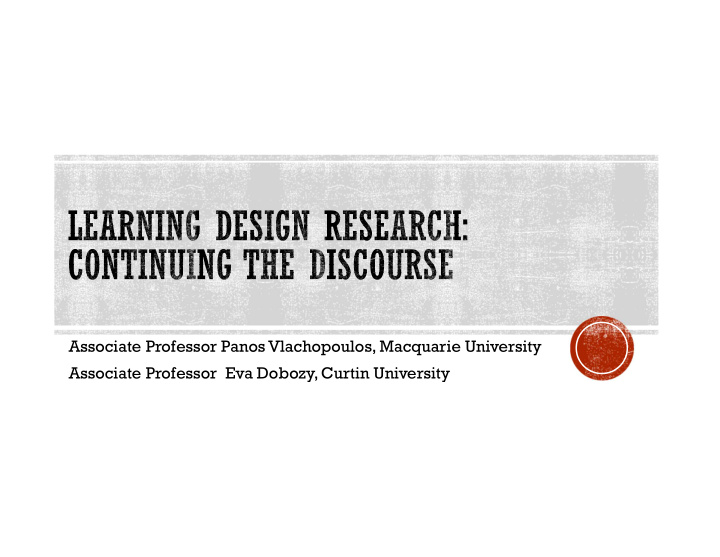



Associate Professor Panos Vlachopoulos, Macquarie University Associate Professor Eva Dobozy, Curtin University
What? What do we know about Learning Design? What approaches, models, frameworks have been developed over the years? Why? Why do we do Learning Design? How? How do we do it? How well do we do it? So what? So what does Learning Design contribute to the everyday practice in universities? So what are some issues and challenges or gaps? Now what? Now, what else should we be doing as a Learning Design community?
Goodyear, P., Carvalho, L. (2016). Activity centred analysis and design in the Dalziel, J. et al., (2016). The Larnaca Declaration on Learning evolution of learning networks. Tenth International Conference on Networked Design. Journal of Interactive Media in Education. 2016(1), p.7 Learning, Lancaster, UK: Lancaster University (UK).
LAMS Tool for Learning Design Phoebe Online Pedagogic Planner
The ABC Learning Design Process Carpe Diem – A team based approach to learning design The DDI approach to Learning Design
In order to make explicit epistemological and technological integration attempts by the designer of a particular learning sequence or series of learning sequences (Dobozy, 2013) In order to devise new practices, plans and activities, resources and tools aimed at achieving particular educational aims in a given context. (Mor and Craft ,2015) In order to create a representation of teaching and learning practice in some notational form so that it can serve as a model or template adaptable by a teacher to suit his/her context (Agostinho, 2006) In order to design something (an aspect of a curriculum typically an activity) that can be put into immediate use with learners (Salmon, 2014) In order to provide programme teams the space and time to explicitly integrate the language, practice and tools for learning design with access to expertise required for that context(Seeto & Vlachopoulos, 2015)
Pedagogical underpinnings (usually constructivism and socio constructivism) Templates ( digital or paper-based) Process (Collaboration? Individuals?) An expectation for an output (from one activity to a complete program map…) BUT… What about implementation of the Learning Designs? What about evaluation of Learning Designs?
collaborate Share Reuse
Is it important to accept this conceptual plurality and definitional potpourri or should the Australian and international Learning Design community attempt to pursue conceptual unity and definitional clarity? Additional considerations: Collaborate more Share more Reuse more Evaluate more
Recommend
More recommend